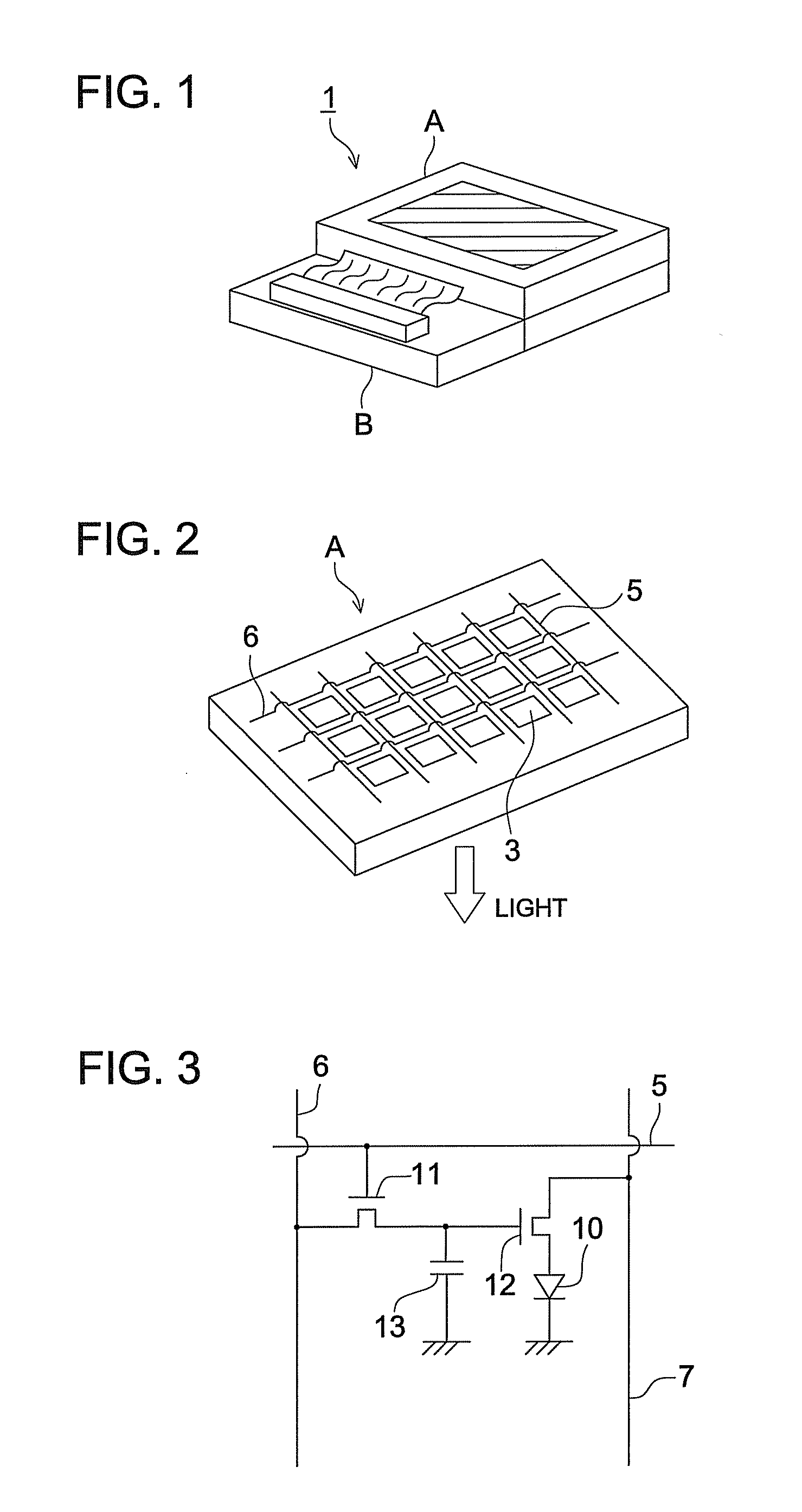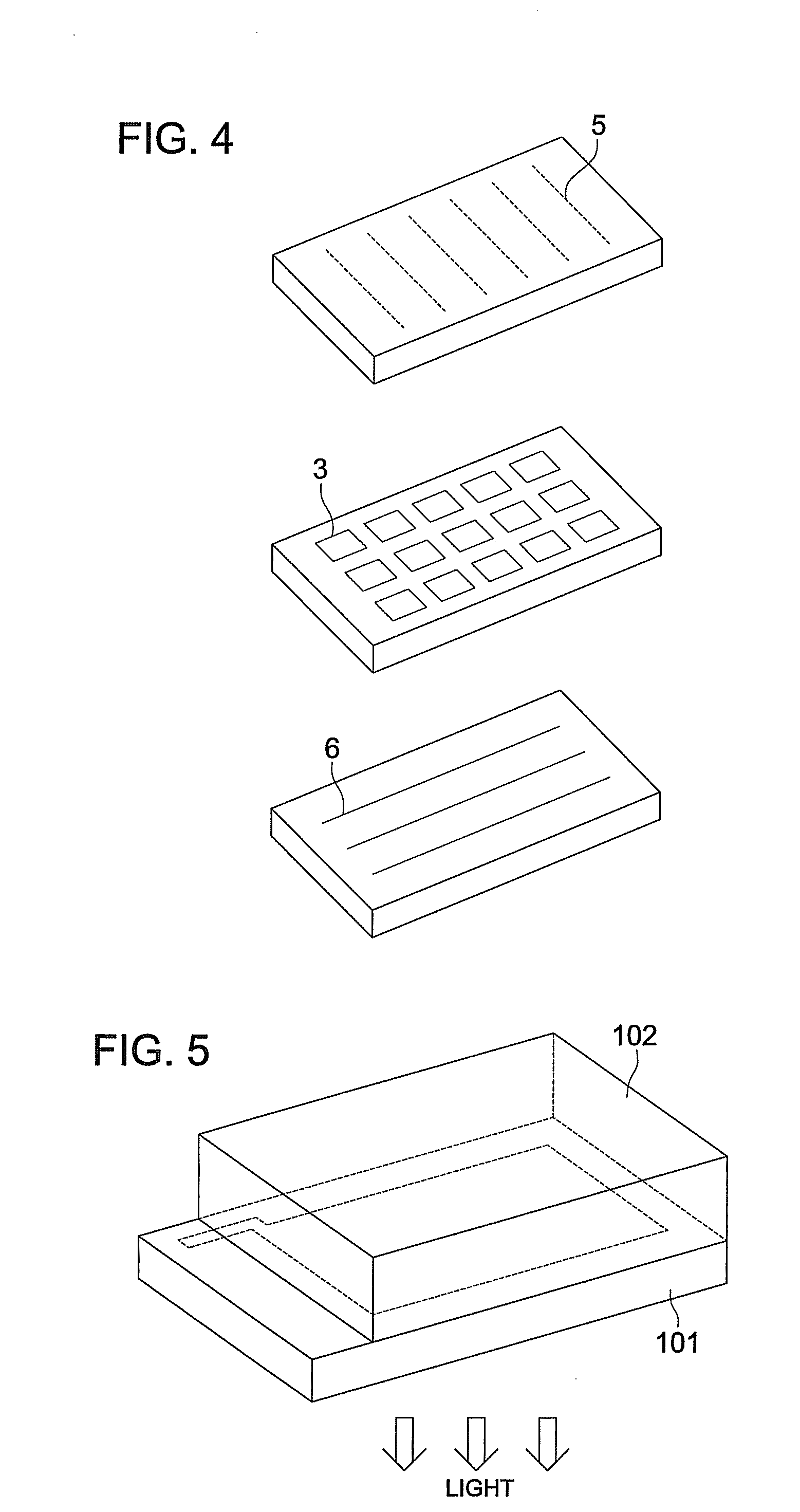Organic electroluminescent element, display device and illuminating device
a technology of electroluminescent elements and display devices, applied in the direction of discharge tube luminescnet screens, other domestic articles, organic semiconductor devices, etc., can solve the problems of significant degradation of the emission life of elements, higher efficiency and longer life, and achieve the effect of high light emission efficiency
- Summary
- Abstract
- Description
- Claims
- Application Information
AI Technical Summary
Benefits of technology
Problems solved by technology
Method used
Image
Examples
example 1
Preparation of Organic EL Elements 1-1 to 1-41
[0262]A pattern was formed on a substrate composed of a glass plate of 100 mm×100 mm×1.1 mm and a 100 nm ITO (indium tin oxide) layer (NA45: manufactured by NH Technoglass Co., Ltd.) as an anode. Then the resulting transparent substrate, having the above ITO transparent electrode, was subjected to ultrasonic cleaning in iso-propylalcohol, dried with a dry nitrogen gas, and then subjected to UV-ozone cleaning for 5 minutes. Thus obtained transparent substrate was fixed to a substrate holder of a commercially available vacuum deposition apparatus. Further, 200 mg of α-NPD was placed in a first resistive heating molybdenum boat, 200 mg of CBP, as a host compound, was placed in a second resistive heating molybdenum boat, 200 mg of BCP was placed in a third resistive heating molybdenum boat, 100 mg of illustrated compound 1-1 was placed in a fourth resistive heating molybdenum boat, and 200 mg of Alq3 was placed in a fifth resistive heating m...
example 2
Preparation of Organic EL Elements 2-1 to 2-45
[0275]A pattern was formed on a substrate composed of a glass plate of 100 mm×100 mm×1.1 mm and a 100 nm ITO (indium tin oxide) layer (NA4S: manufactured by NH Technoglass Co., Ltd.) as an anode. Then the resulting transparent substrate, having the above ITO transparent electrode, was subjected to ultrasonic cleaning in iso-propylalcohol, dried with a dry nitrogen gas, and then subjected to UV-ozone cleaning for 5 minutes. Thus obtained transparent substrate was fixed to a substrate holder of a commercially available vacuum deposition apparatus. Further, 200 mg of α-NPD was placed in a first resistive heating molybdenum boat, 100 mg of illustrated compound H-21, as an electron blocking compound, was placed in a second resistive heating molybdenum boat, 200 mg of CBP, as a host compound was placed in a third resistive heating molybdenum boat, 200 mg of BCP was placed in a fourth resistive heating molybdenum boat, 100 mg of illustrated com...
example 3
[0283]Production of Full-Color Display
[0284](Preparation of Blue Light Emitting Element)
[0285]Organic EL element 1-14 prepared in Example 1 was employed as a blue light emitting element for the full-color display.
[0286](Preparation of Green Light Emitting Element)
[0287]A green light emitting element was prepared in the same manner as in organic EL element 1-14 in Example 1 except that the host compound and the dopant were changed to CBP and Ir-1 respectively, and the resulting element was employed as a green light emitting element for the full-color display.
[0288](Preparation of Red Light Emitting Element)
[0289]A red light emitting element was prepared in the same manner as in organic EL element 1-14 in Example 1 except that the host compound and the dopant were changed to CBP and Ir-9 respectively, and the resulting element was employed as a red light emitting element for the full-color display.
[0290]The above prepared red, green, and blue light emitting organic EL elements were ju...
PUM
 Login to View More
Login to View More Abstract
Description
Claims
Application Information
 Login to View More
Login to View More - R&D
- Intellectual Property
- Life Sciences
- Materials
- Tech Scout
- Unparalleled Data Quality
- Higher Quality Content
- 60% Fewer Hallucinations
Browse by: Latest US Patents, China's latest patents, Technical Efficacy Thesaurus, Application Domain, Technology Topic, Popular Technical Reports.
© 2025 PatSnap. All rights reserved.Legal|Privacy policy|Modern Slavery Act Transparency Statement|Sitemap|About US| Contact US: help@patsnap.com



